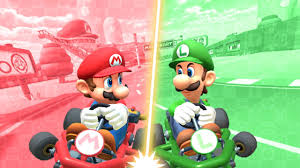Understanding Game Modals: Exploring Their Function and Impact in Gaming
Content:
Have you ever wondered how game modals shape the player experience? Game modals are essential UI elements that guide users through specific actions, decisions, or feedback within a game. From simple confirmation dialogs to complex inventory screens, modals play a critical role in communication and engagement. But what exactly are game modals, and how do they enhance or detract from the gaming experience?
What Are Game Modals?
n game interface until the player interacts with it. Modals can be used for various purposes, such as prompting players to make choices, displaying important notifications, or handling ingame purchases. The key characteristic of a modal is that it disrupts the current flow, demanding attention.
Common Questions About Game Modals
1. How do modals affect player retention?
While modals can provide necessary information, too many or poorly designed ones may frustrate players, leading to lower retention. On the other hand, wellcrafted modals can improve clarity and streamline gameplay.
2. What are the best practices for designing modals?
Keep them simple and focused.
Use clear callstoaction (CTAs).

Ensure they don’t disrupt the immersion excessively.
Offer easy ways to dismiss if not relevant.
3. Can modals be used for monetization?
Yes, modals are often employed for promotional offers or microtransactions. However, players are more likely to engage if the modal provides value, such as exclusive rewards or timesensitive deals.
The Impact of Game Modals
Modals are a doubleedged sword. When used correctly, they can enhance the player journey by providing context, guiding decisions, and reinforcing game mechanics. For example, a modal might appear when a player unlocks a new ability, ensuring they understand its use immediately.
However, overuse or intrusive modals can break immersion. A player stuck in an endless series of dialogs is likely to lose interest. Thus, developers must balance utility with player experience.
Sharing Insights: A Case Study
Many successful games use modals strategically. For instance, *The Witcher 3* employs modals for critical story decisions, making players feel invested without overwhelming them. Meanwhile, mobile games often use modals for quick tutorials, ensuring new players grasp mechanics without disrupting the action.
Final Thoughts
Game modals are a powerful tool in a developer’s arsenal, but their effectiveness hinges on thoughtful implementation. By asking questions like *How can modals improve UX?* and *What makes a modal engaging?*, designers can create solutions that inform, persuade, and delight players.
Whether you’re a developer or a player, understanding modals can help you apciate or craft better gaming experiences. After all, the right modal can make all the difference in keeping players hooked.

